

Context-Aware Computing: The CyberDesk Project
Anind K. Dey
Graphics, Visualization & Usability Center
Georgia Institute of Technology
Atlanta, GA 30332-0280 USA
+1-404-894-7512
anind@cc.gatech.edu
AAAI '98 Spring Symposium
Stanford University
March 23-25, 1998
Table of Contents
The CyberDesk project is aimed at providing a software
architecture that dynamically integrates software modules. This integration
is driven by a user's context, where context includes the user's physical,
social, emotional , and mental (focus-of-attention) environments. While
a user's context changes in all settings, it tends to change most frequently
in a mobile setting. We have used the CyberDesk system in a desktop setting
and are currently using it to build an intelligent home environment.
Dynamic integration, mobile computing, ubiquitous computing,
intelligent environments
The CyberDesk system is a software architecture that
has been developed for the domain of context-aware computing. Context-aware
computing is an area of research where the human computer interface leverages
knowledge of the user's context. Context includes, but is not limited to,
information the user is attending to, emotional state, focus of attention,
location and orientation, date and time of day, objects and people in the
user's environment. With greater consumer acceptance of ubiquitous and
mobile computing, users are often in a position where their context is
changing rapidly and the amount of information that they have access to
at any time can grow quite large. This dynamically changing context can
be used to predict what information the user wants at a particular time.
The CyberDesk architecture uses contextual information
to dynamically integrate software modules together. This has the effect
of reducing programming burden in identifying and defining the integrating
behavior of software modules, while at the same time, retaining as much
user freedom in determining how integration is to occur. This context-aware
integration moves away from the present situation in which the user must
seek out relevant software functionality when he wants it, to a situation
where the infrastructure seeks out the user when and where he wants it.
There hasn't been a lot of work in the area of context-aware
computing, mainly due to the fact that there was not enough hardware infrastructure
to support and create a compelling application. Most of the work in this
area has leveraged off of knowledge of a user's location: Xerox Parc's
PARCTAB [14], Olivetti's Active Badge project [13], Schilit's thesis work
in context-aware mobile computing [12], and the CyberGuide project [1].
More recent work has dealt solely with knowledge of the information a
user is attending to: OpenStep's notion of facilities [2], Apple Data Detectors
[3], and Intel's Selection Recognition Agent [9]. The Microsoft Office
Assistant uses knowledge of a user's history to help predict a user's goal
and to help achieve it. Picard [10] and Essa and Pentland [7] have used
various techniques to infer a user's emotional state to help guide the
user.
In the area of integrating software services, much work
has been done. This ranges from the use of simple UNIX pipes, to more complex
systems like Field [11], Smalltalk's Model-View-Controller [8], and the
Common Lisp Object System [4]. Our underlying infrastructure allows dynamic
integration of isolated services at run-time. This mediation consists of
two basic steps: registration of components and handling of events. While
the more complex systems listed above provide for these two basic steps,
CyberDesk appears to be more flexible for the domain of context-aware computing,
mainly because it was designed for this domain.
The CyberDesk system consists of five main components:
a Registry, information services, type converters, an Integrator, and a
user interface. The Registry maintains a list of components in the system
and the interfaces that each supports. The information services are the
tools and functions the user ultimately wants to use, such as an e-mail
reader, a contact manager, or a Web-based search engine. These services
register their interfaces with the Registry and announce events that provide
data/information to the rest of the system (e.g., the name selected in
the e-mail message in the scenario). The type converters accept announced
data from the system and convert it recursively to other forms of data
that may be useful (e.g. a string being converted to a URL). The Integrator
uses the Registry to automatically find matches between user data and the
services that can use the data, a task that would normally be performed
by the system designer. The matched services are then displayed to the
user through the user interface for integration.
The run-time relationship between the components (not
including the Registry) is depicted in Figure 1.
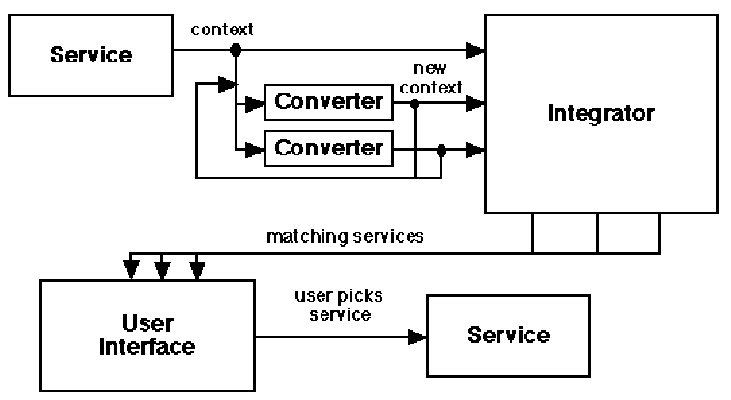
Figure 1. The run-time architecture of CyberDesk. Arrows indicate the flow of information and control in the system.
Initially, CyberDesk was only able to work with simple
strings that a user was working with in a desktop application. Now, CyberDesk
is also able to work with time and location, other people in the room,
and objects in the room, in a desktop environment, networked environment,
and mobile environment. All applications make their services available
to the user via a common interface. The services available at any particular
time depend on the user's context at that time, This can be particularly
useful when the user's context is changing frequently, as in a mobile,
intelligent environment. By providing relevant suggestions and data to
the user, the user receives useful and possibly unexpected help in completing
their tasks.
To illustrate this behavior, an actual user experience
follows. As seen in Figure 2, a user is checking his e-mail, and reads
one about some interesting research.
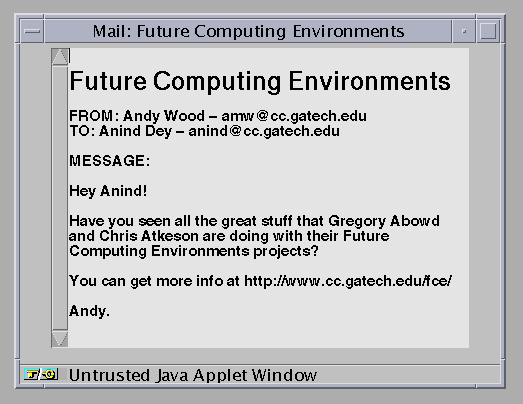
Figure 2. Content of User's E-mail Message.
The user is interested in the research discussed, highlights
the URL in the message, and CyberDesk offers the following suggestions
through its interface (Figure 3): search for the selected text using AltaVista,
find pages that reference this URL using AltaVista, and display the URL
in Netscape.
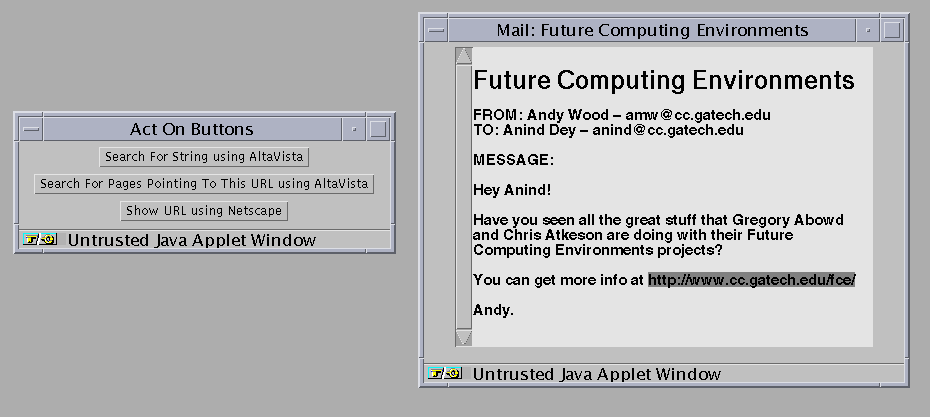
Figure 3. User selects the URL and is offered suggestions.
He chooses the last option and views the URL listed in
the message (Figure 4).
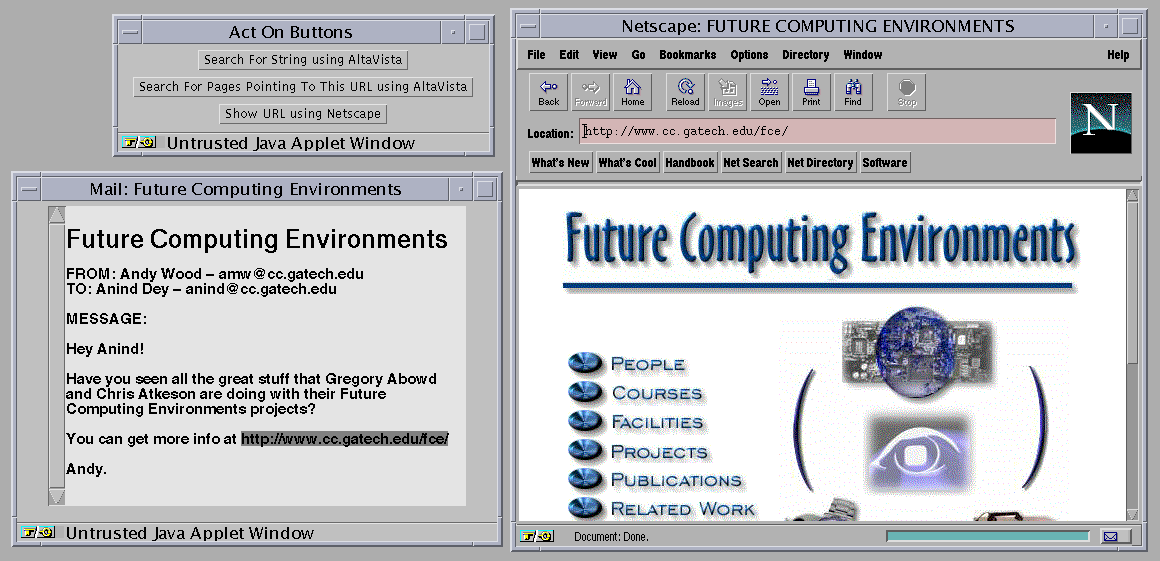
Figure 4. CyberDesk executes the service and displays the URL.
The user then selects the name of the person in charge
of the research and is offered the following suggestions (Figure 5): search
for the selected text using AltaVista, search for a phone number and mailing
address using Switchboard, lookup the name in the contact manager. The
user wants to contact this researcher so he checks to see if the name is
in his contact manager, but it isn't.
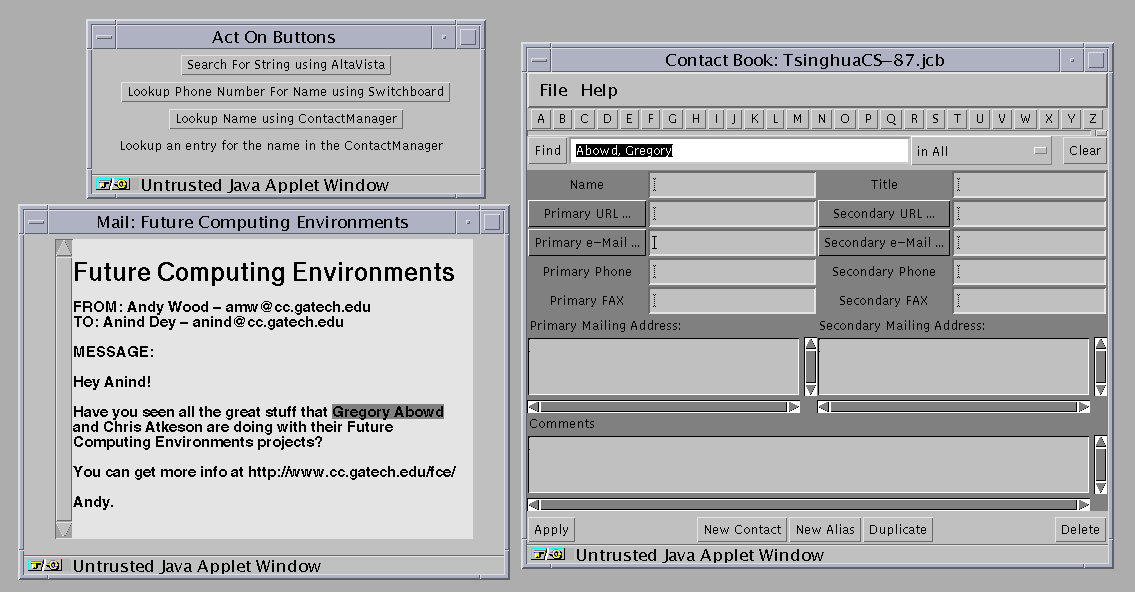
Figure 5. User selects name and chooses the Contact lookup service.
So, he selects the phone number and mailing address lookup
service (Figure 6). He then creates a new entry in the contact manager
with this new information.
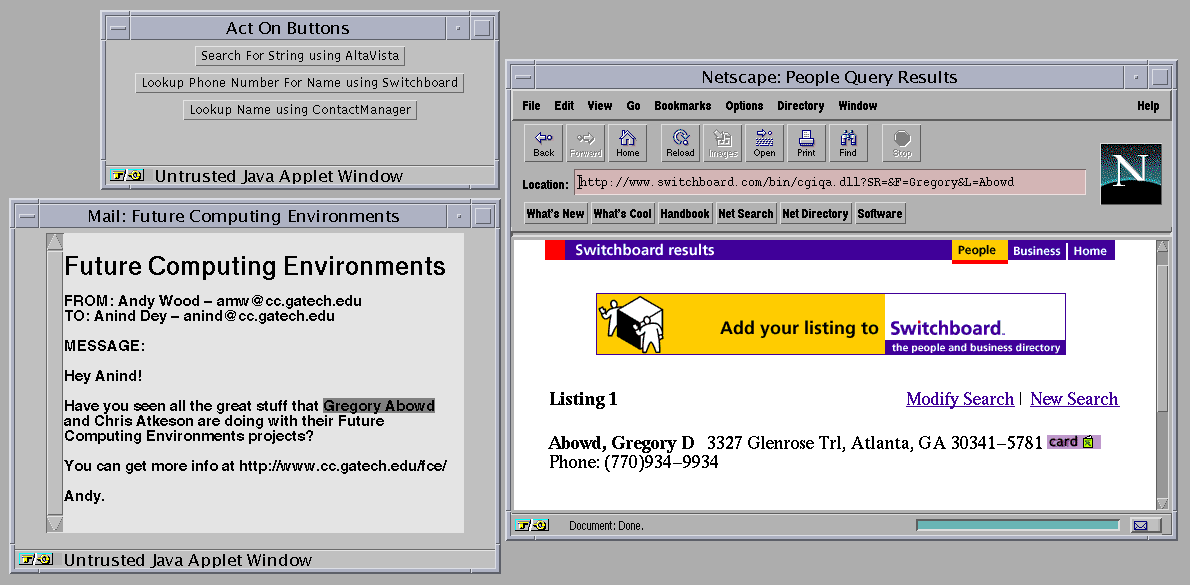
Figure 6. User selects the phone number lookup service.>
After providing the system with these abilities, we made
a simple extension to increase the functionality to the user. We noticed
that many of the web-based services, which have been integrated into CyberDesk,
search for type information that CyberDesk can use. For example, when Switchboard
is given a name, it returns a phone number and mailing address. When WhoWhere
is given a name, it returns a corresponding e-mail address. The extension
we made to CyberDesk takes advantage of these services, by automatically
feeding these services with captured context and using the returned data
as additional context.
So, now when a user selects a name, not only do CyberDesk's
suggestions deal with using name information, but also deal with the automatically
obtained e-mail address, phone number, mailing address, URL, etc. This
provides the user with additional information to work with and potentially
saves the user some effort in locating this information themselves. As
seen in Figure 7, the user can easily create a rich contact entry, simply
by selecting a name.
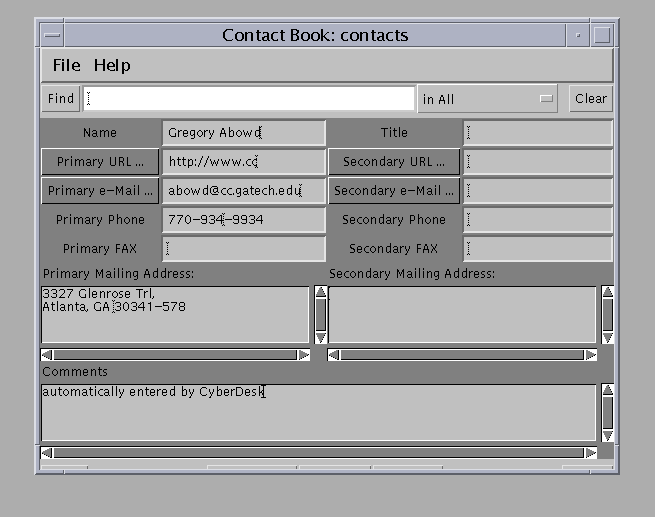
Figure 7. User creates a rich contact entry.>
We have used the CyberDesk inferencing engine to create
a mobile scenario as well. It behaves similarly to the system previously
described, with a few extensions. These extensions include the addition
of context types (user position, identification of others in the environment,
identification of objects in the environment) and allowing the user to
be mobile, using either a series of networked wall-based displays mounted
in various rooms or a device the user can carry. This portion of the project
is a work in progress.
In our test environment, we have 3 separate rooms: a kitchen,
an office, and a living room. The mobile system is a work in progress.
We are using face recognition to identify the primary user and others in
the room. We use an infrared positioning system to track both users and
the wireless mobile computing devices. Some objects in the environment
are active and intelligent. For example, the system knows when the user
approaches the fridge and the fridge lets the system know about its contents.
As the user enters a different room, the CyberDesk system is fed with new
context information: type of room and identification of objects and people
in the new environment. For example, when the user enters the kitchen,
he may be provided with the following list of suggestions:
- Obtain a list of fridge items
- At mealtime, create and display a list of recipes that can
be made with available ingredients and knowing what kind of food the user
likes
- View important reminders and notes.
When the user enters the living room, the list might be this:
- View a list of today’s headlines
- Look at recent sports scores
- Read personal e-mail.
Or when the user enters the office, the list might look this:
- Load the last document being worked on
- View business-related reminders
- Load latest set of meeting notes (or if someone was in the
room with the user, load notes for last meeting that both the user and
the other person had attended).
The software development for this scenario is complete. Only
the integration of the various hardware components, the pieces of the system
providing the context information to CyberDesk, is left to complete.
The CyberDesk system provides a software architecture
designed to support context-aware computing. It leverages knowledge of
a user's context to dynamically integrate software services, in support
of a user's task. A desktop system has been built which uses knowledge
of the information a user is attending to. A mobile scenario in an intelligent
environment is currently being built. Future work includes increasing the
use of context and using statistical analysis to determine which of the
possible choices a user is likely to choose.
For more information on the CyberDesk project, including
Web-based demos and other publications [5, 6, 15], see http://www.cc.gatech.edu/fce/cyberdesk.
For more information on other related projects at Georgia
Tech, see http://www.cc.gatech.edu/fce.
-
Abowd, G.D. et al. CyberGuide: A mobile context-aware tour
guide. ACM Wireless Networks, 3, 1997. To appear. Available at ftp://ftp.gvu.gatech.edu/pub/gvu/tr/96-27.ps.Z
-
Apple Enterprise Software. Topics in OpenStep Programming.
Available at http://devworld.apple.com/dev/SWTechPubs/Documents/OPENSTEP/ProgrammingTopics/,1997.
-
Apple Research Labs. Apple Data Detectors homepage. Available
at
http://www.research.apple.com/research/tech/AppleDataDetectors/, 1997.
-
Bobrow, D. et al. Common Lisp Object System Specification
X3JI3 Document 88-02R. ACM SIGPLAN Notices 23 (special issue). September
1988.
-
Dey, A.K., Abowd, G.D., & Wood, A. CyberDesk: A Framework
for Providing Self-Integrating Context-Aware Services.
Proceedings of Intelligent User Interfaces '98, pages 47-54, Jan. 1998.
Available at http://www.cc.gatech.edu/fce/cyberdesk/pubs/IUI98/IUI98.html
-
Dey, A.K., Abowd, G.D., & Wood, A. CyberDesk: A Framework
for Providing Self-Integrating Ubiquitous Software Services. Technical
Report, GVU Center, Georgia Institute of Technology. GIT-GVU-97-20, 1997.
Available at ftp://ftp.gvu.gatech.edu/pub/gvu/tr/96-20.ps.Z
-
Essa, I. and Pentland, A. Facial expression recognition using
a dynamic model and motion energy. In Proceedings of the International
Conference on Computer Vision, pages 360-367. IEEE Computer Society, Cambridge,
MA, 1995. Available as MIT Media Lab Perceptual Computing Techreport #307
from http://vismod.www.media.mit.edu/vismod.
-
Krasner, G.E. and Pope, S.T. A cookbook for using the model-view-controller
user interface paradigm in Smalltalk-80. Journal of Object Oriented Programming
1(3) (August/September 1988), pp. 26-49.
-
Pandit, M. and Kalbag, S. The Selection Recognition Agent:
Instant Access to Relevant Information and Operations. In Proceedings of
Intelligent User Interfaces `97. ACM Press, 1997.
-
Picard, R. Affective computing. Technical Report 321, MIT
Media Lab, Perceptual Computing, November 1995. Available as MIT Media
Lab Perceptual Computing Techreport #362 from http://vismod.www.media.mit.edu/vismod.
-
Reiss, S.P. Integration mechanisms in the FIELD environment.
Technical Report CS-88-18, Brown University, October 1988.
-
Schilit, W.N. System architecture for context-aware mobile
computing. Ph.D. Thesis, Columbia University, May 1995.
-
Want R. Et Al. The active badge location system. ACM Transactions
on Information Systems, 10(1): 91-102, January 1992. Available at ftp://ftp.cam-orl.co.uk/pub/docs/ORL/tr.92.1.ps.Z
-
Want R. Et Al. An Overview of the PARCTAB Ubiquitous Computing
Experiment. IEEE Personal Communications 2 (6). 1995. 28-43.
-
Wood, A., Dey, A.K., & Abowd, G.D. CyberDesk: Automated
Integration of Desktop and Network Services. Technical Note in the Proceedings
of CHI'97, pp. 552-3. Available at http://www.cc.gatech.edu/fce/cyberdesk/pubs/CHI97/Cdesk-TN.html








